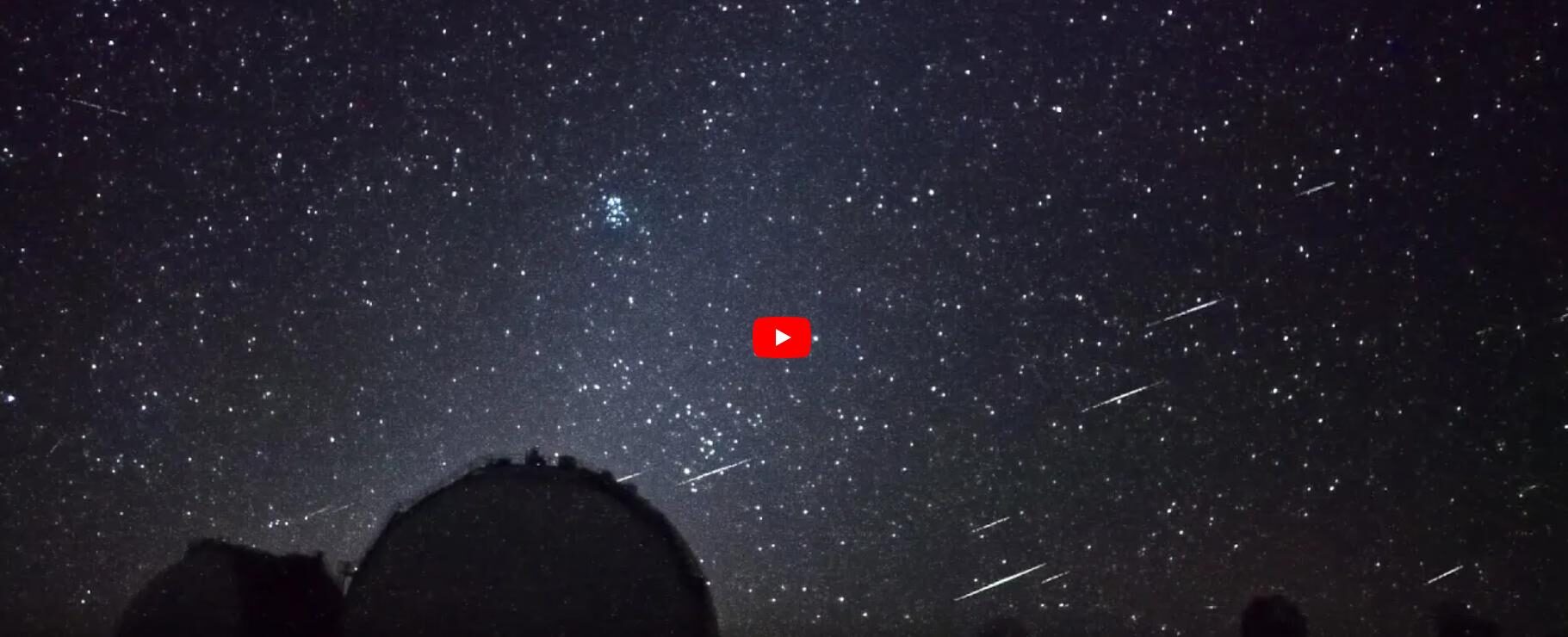
In the early morning hours of July 14, the camera captured an unusual phenomenon in which more than a dozen meteors streamed from the same direction in just 10 seconds.
This is a rare meteor outburst event associated with a "meteoroid cluster." A meteoroid cluster is thought to be caused by meteoric material breaking up into smaller pieces for some reason a short time before it enters the Earth's atmosphere. This phenomenon provides valuable information about the structure of meteor bodies. Meteoroid clusters are so rare that only a few cases have been reported so far since the phenomenon was first identified during the Leonid meteor shower in 1997 (Note 2).
Prof. Junichi Watanabe, Vice-Director of the National Astronomical Observatory of Japan (NAOJ), who proposed a mechanism to explain the "meteor cluster" phenomenon in a publication in 2003 (note 3), comments, "The scientific significance of capturing such a rare phenomenon is extremely great, and it is especially significant because the overall duration of the event was longer than in previous cases. The fact that the camera was located at Maunakea, one of the best observation sites in the world, was also a major factor in capturing such a rare event in addition to recent developments in camera technology. I hope that this camera will continue to capture similar rare phenomena in the future."
The people who first noticed this phenomenon were the avid viewers who have been watching the Subaru-Asahi Sky Camera (note 4). One of the viewers, who calls himself "Fukuro (night owl)," made the excited comment, "At first I thought it was just a series of small meteors, but when I double-checked for a tally, I was amazed to notice that several small meteors were visible coming from the same direction at the same time."
Dr. Ichi Tanaka, a resident researcher and camera administrator at Subaru Telescope, felt that a rare phenomenon might have happened from the discussions on the chat, and contacted Prof. Watanabe, who then took a professional interest in this video. This data is now being analyzed in detail by researchers.
The Subaru Telescope's "Subaru-Asahi Sky Camera" was installed with the support of Prof. Michitoshi Yoshida, the Director of Subaru Telescope, in the hope of bringing the wonderful starry skies of Maunakea to everyone, especially to the children not only in Hawai'i and Japan, but also around the world. The camara will continue to convey beautiful views of the starry skies and the Universe, which are a great advantage of Hawai'i, to many people.
Note 1: The "Subaru-Asahi Sky Camera" is a joint project of Subaru Telescope, NAOJ, and Asahi Shimbun. If you wish to use it for press purposes, please credit "Provided by NAOJ and Asahi Shimbun."
Note 2: A few of the documented cases are: in September 2016, observations in the Czech Republic showed a cluster of eight meteors appearing over a period of two seconds, which was associated with the "September epsilon Perseid meteor shower," and on January 18, 2021, the International Meteor Organization (IMO) reported a cluster of seven meteors appearing over a period of three seconds which was captured by a camera at the University of Arizona.
September epsilon Perseid cluster as a result of orbital fragmentation (A&A)
Meteor burst from unknown origin (IMO)
Note 3: J. Watanabe et al., Publications of the Astronomical Society of Japan, Vol.55, No.3, pp. L23-L26
Note 4: The Subaru-Asahi Sky Camera Team would like to take this opportunity to thank the many viewers and supporters who have been watching the Subaru-Asahi Sky Camera on a regular basis.



Comment: Is this yet another sign of the increasing space rock activity in our skies?
- Volcanoes, Earthquakes And The 3,600 Year Comet Cycle
- Sott Exclusive: Nemesis, not 'Nibiru' - Clarifying mainstream reports about 'a large ninth planet' that periodically sends comets our way
- Michigan Meteor Event: Fireball Numbers Increased Again in 2017
- NASA space data supports citizens' observations: Meteor fireballs are increasing dramatically
Also check out SOTT radio's: